
This week on the blog, “The Patron Saint of Architecture,” Angela Mazzi features therapeutic landscapes through an interview with me. She asked some excellent, thought-provoking questions that get to the heart of what therapeutic landscapes are, how they function, why they’re necessary, and what designers and healthcare providers can do to make sure that they get incorporated into their projects.
Angela is an architect who specializes in healthcare. Her blog explores all sorts of aspects of healthcare-related design, including (of course) design, as well as business strategies, communication techniques, and “thoughts on how to get and stay inspired as a designer.”
Here are a couple snippets, but I encourage you to read the full post on The Patron Saint of Architecture blog.
How Does your Garden Grow? The Role of Therapeutic Landscapes in Design, by Angela Mazzi
What does landscaping mean to you? Most likely, not nearly enough. Too easily, we view it as decorative, a “nice to have” part of a project. However, as we learn more about salutogenic design and the effects of the environment on wellness (everything from healing to better job performance), landscape starts to become a critical element, one which should form the basis of design. With this in mind, I asked Naomi Sachs, Founder and Director of the Therapeutic Landscapes Network (TLN) to share some insights on the power of nature.
What is the difference between landscaping and a garden? Is it only about habitation?
In general, I would say that a “landscape” is any outdoor space, wild or designed, and a “garden” is a designed space. A restorative landscape is simply an outdoor space that makes you feel good when you’re in it. To me, “landscaping” implies decorative elements like a lawn, shrubs, some trees, and is not necessarily intended for interaction. A therapeutic (or healing) garden is a space designed for a specific population (children, cancer patients, people with Alzheimer’s) and a specific intended outcome (stress reduction, positive distraction, rehabilitation). This is not to say that landscaping isn’t important. Well-designed and maintained landscapes communicate to patients and their families that they will receive a high level of care, and this can happen from the moment you cross the property line. Even areas such as parking lots can utilize landscape to provide and reinforce the overall image and mission of the facility.
Maintenance is always a concern when it comes to landscaping- I’ve actually worked with healthcare clients who wanted nothing but grass in the areas they “had” to landscape for ease of maintenance. What kind of recommendations can you make to landscape skeptics about using plantings?
Access to nature just makes good business sense. Studies by Roger Ulrich, confirmed by others, have demonstrated less need for pain medication, improved patient satisfaction, faster recovery rates, and many other examples of improved outcomes for patients and staff. When you really look at the benefits of providing access to nature, the return on investment (ROI) justifies the initial cost and lifetime maintenance. Hospitals need to see landscaping as a strategic investment in the same manner they would the purchase of a new MRI.
Visit The Patron Saint of Architecture to read the full article. Thank you, Angela, for a great conversation and post!
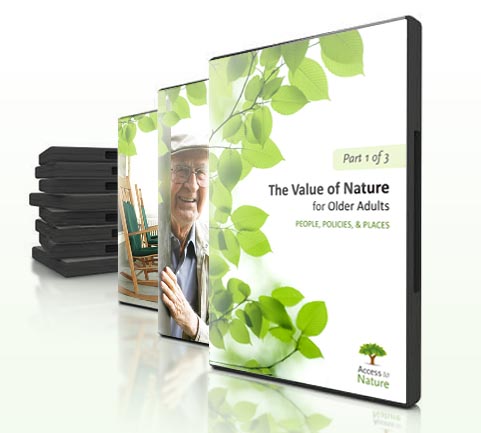
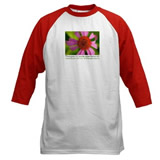

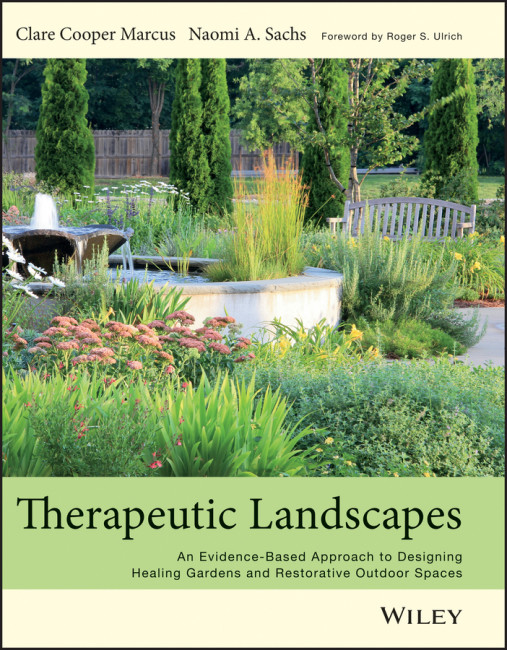
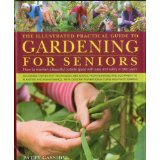


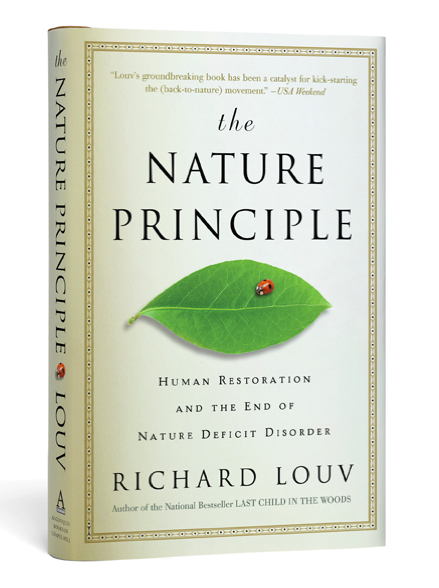

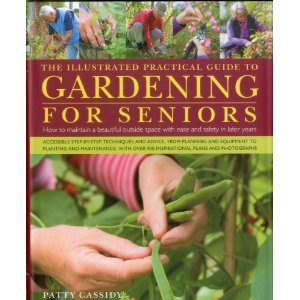
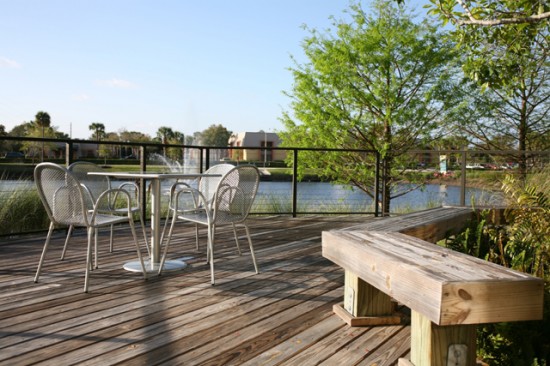
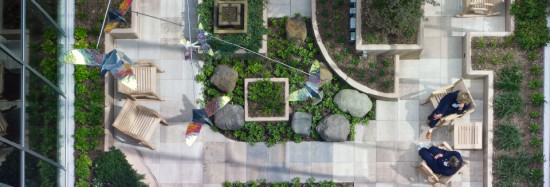

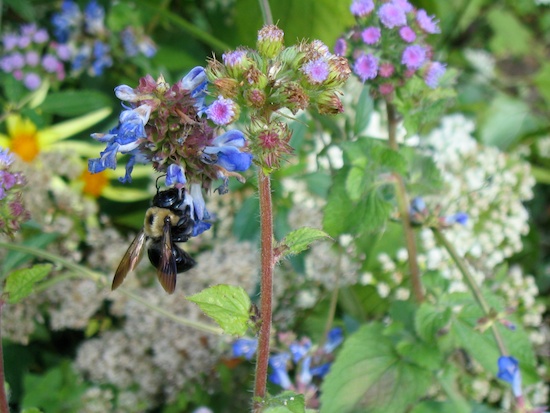
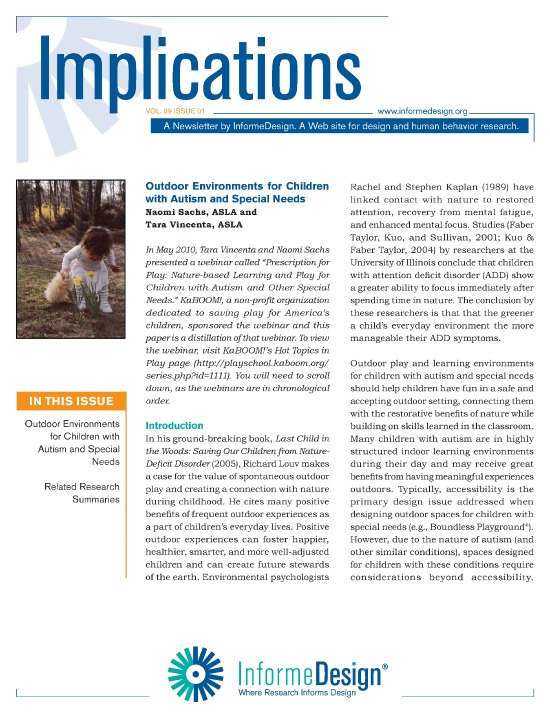 Hot off the press! InformeDesign’s latest issue of Implications (Vol. 9, Issue 1) just went live today, and it features an article by Naomi Sachs and Tara Vincenta, “
Hot off the press! InformeDesign’s latest issue of Implications (Vol. 9, Issue 1) just went live today, and it features an article by Naomi Sachs and Tara Vincenta, “